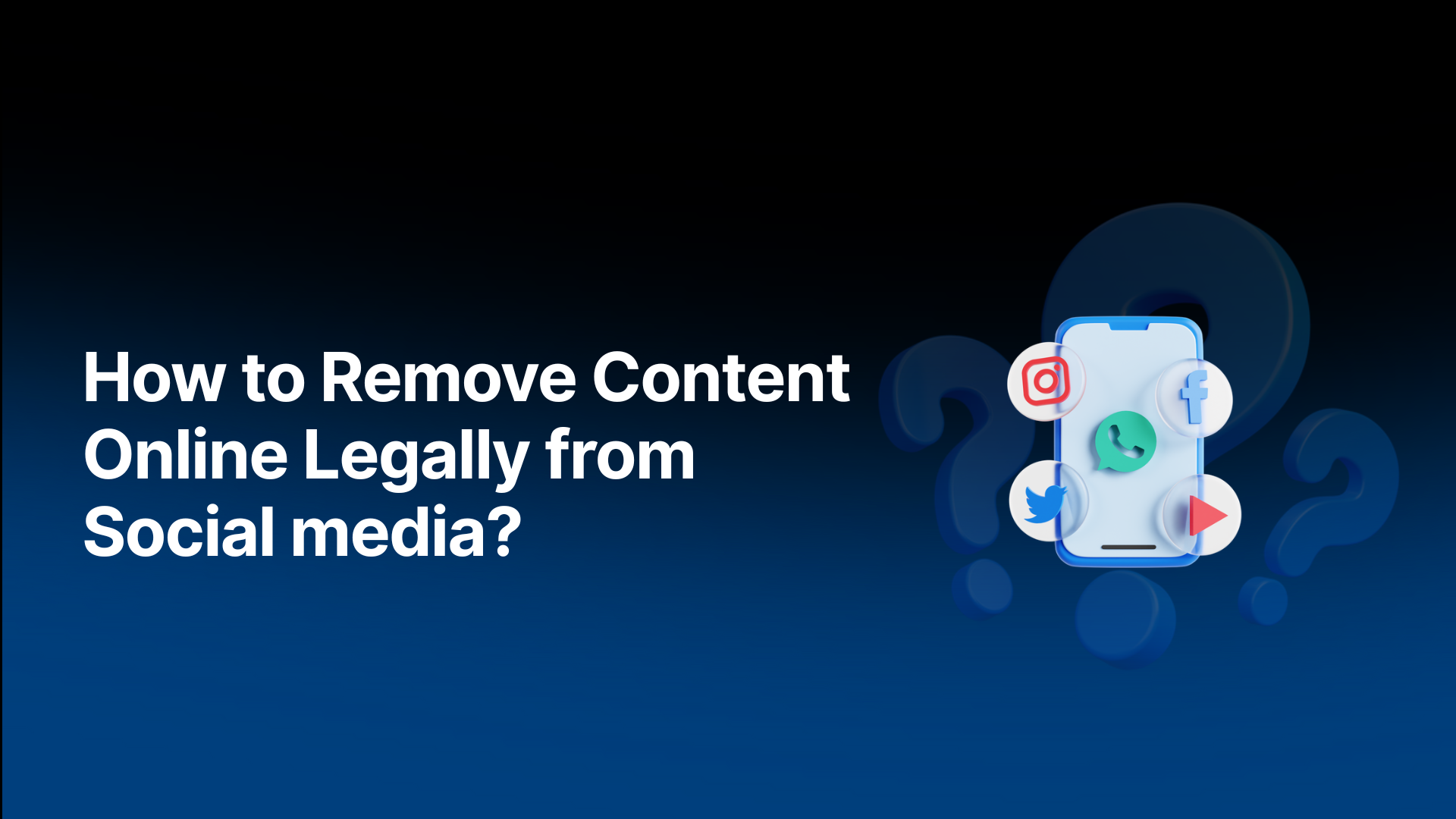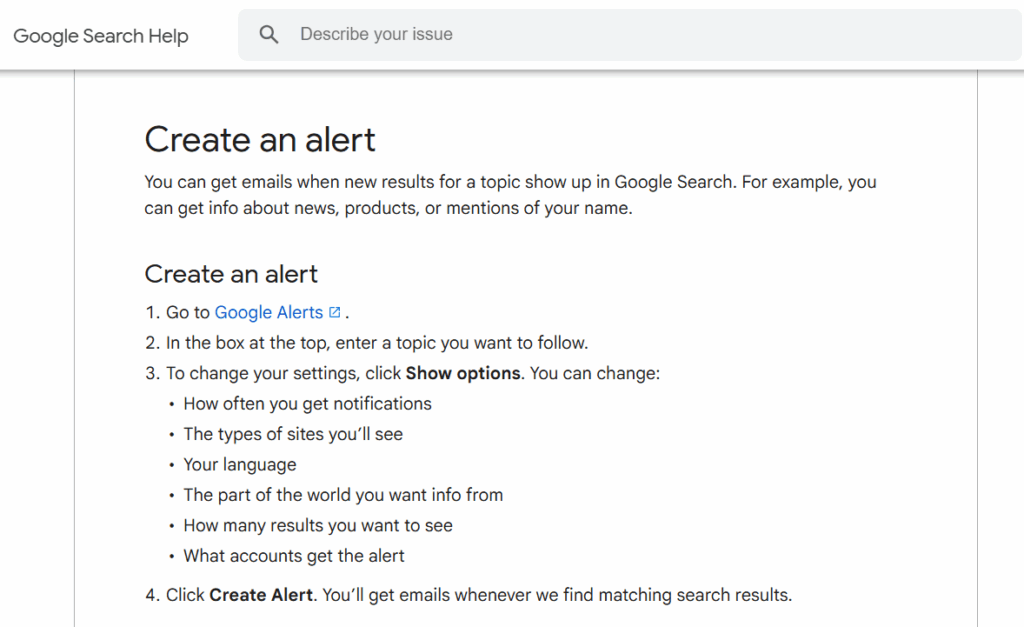Over 200 companies trust Media Removal. Get a Quote Now >
How to Remove Content Online Legally from Social Media

Social media platforms have become essential for personal branding, business growth, and public communication. However, with the increasing presence of users, harmful or defamatory content can spread quickly, damaging reputations. Whether it’s a false accusation, inappropriate content, or privacy violations, knowing how to remove content online legally is crucial for protecting your image. Fortunately, social media platforms have policies in place to help you report and remove harmful content that violates your rights. In this blog post, we’ll walk you through the legal steps you can take to remove content from social media platforms, including Facebook, Instagram, Twitter, and others, and how to protect your online reputation.
Why You May Need to Remove Content Legally from Social Media
Social media allows individuals to express their opinions, but when that expression becomes harmful or defamatory, it can cause lasting damage. Here are common reasons why you may want to remove content from social media:
- Defamation: False statements or accusations that harm your reputation.
- Invasion of Privacy: Sharing personal information or photos without your consent.
- Harassment or Bullying: Abusive or threatening behavior targeted at you or others.
- Intellectual Property Violations: The use of your copyrighted material without permission.
- Fake Reviews or Misinformation: Spreading false or misleading information about you or your business.
Understanding the legal avenues available to you will allow you to take effective action and protect your online presence.
How to Legally Remove Content from Social Media
Removing content from social media legally requires a systematic approach. Here are the steps you can take:
1. Review the Social Media Platform’s Content Policies
Each social media platform has its own set of rules and community guidelines that govern acceptable behavior. Before attempting to remove content, review the platform’s policies to determine if the content violates any of their guidelines.
- Facebook and Instagram: Both platforms fall under the Facebook Community Standards. They prohibit harassment, hate speech, fake accounts, and unauthorized content.
- Twitter: Twitter has policies against abuse, harassment, and the sharing of private information without consent.
- LinkedIn: LinkedIn’s User Agreement prohibits harassment, defamatory content, and the publication of misleading or unauthorized information.
By familiarizing yourself with these policies, you can better understand your rights and the platform’s responsibilities when it comes to content removal.
2. Report the Content to the Social Media Platform
Once you identify harmful content, the next step is to report it directly to the platform. Social media platforms provide reporting tools that allow users to flag content that violates their guidelines. Here’s how to report content on common social media platforms:
- Facebook/Instagram: Navigate to the post or comment, click on the three dots (options menu), and select Report. Choose the reason for reporting, such as harassment, inappropriate content, or false information.
- Twitter: Click on the three dots next to the tweet, select Report Tweet, and choose the reason (e.g., abusive behavior, harassment, false information).
- LinkedIn: Click on the three dots on the post, select Report, and choose the reason for reporting, such as spam or violation of professional conduct.
Each platform will review the report and take action if the content violates their guidelines, which may include removing the post, issuing warnings, or even suspending the account.
3. Contact the Content Creator Directly (If Appropriate)
If the content is not egregious or harmful to the extent that legal action is necessary, contacting the person who posted the content directly may help resolve the situation amicably. Here’s how you can approach this:
- Send a Polite Message: Reach out through a private message or email, and explain your concerns. Request that they take down the content and provide reasons for the request (e.g., defamation, privacy violation).
- Negotiate a Resolution: In some cases, the individual may be unaware that their content is causing harm. A polite and constructive approach could lead to them removing the post voluntarily.
However, if the person refuses to remove the content or reacts negatively, you may need to escalate the issue by using legal avenues.
4. Use Legal Takedown Requests (DMCA and Defamation Notices)
If the content is particularly harmful, defamatory, or violates your intellectual property rights, you may need to take legal action. Here are two common legal options for content removal:
- DMCA Takedown Notice: If the content includes copyrighted material (e.g., photos, videos, written content) that you own, you can file a Digital Millennium Copyright Act (DMCA) takedown notice. This legal notice informs the platform that the content infringes your intellectual property rights, and the platform is legally required to remove it.
- Defamation Takedown Notice: If the content contains defamatory statements that harm your reputation, you can send a defamation takedown notice. This notice can be sent directly to the platform or the individual who posted the content. In cases where the content is particularly harmful, you may also consider pursuing legal action for defamation.
These legal actions can be more complex and may require assistance from a lawyer. If the platform does not comply with your takedown notice, you may need to escalate the issue by consulting with a legal professional.
5. Seek Legal Action if Necessary
If the harmful content continues to spread or if you’ve been unable to resolve the situation through reporting or negotiation, seeking legal action may be necessary. Here are some legal options:
- Cease and Desist Letter: A cease-and-desist letter is a formal demand for the individual or platform to stop posting harmful content. It can be used for content that is defamatory, a privacy violation, or intellectual property infringement.
- Defamation Lawsuit: If the content is defamatory and is causing significant damage to your reputation or business, filing a defamation lawsuit may be the most appropriate course of action. Consult with an attorney who specializes in defamation law to explore this option.
- Privacy Violations: If the content includes private information shared without consent, such as addresses, phone numbers, or explicit photos, you may have grounds for a legal claim under privacy laws.
Preventing Future Harmful Content from Appearing on Social Media
Protecting yourself from harmful content requires proactive steps to maintain control over your online presence. First, adjust the privacy settings on your social media accounts to limit who can view, comment, or message you, ensuring greater control over interactions. Additionally, regularly monitor your accounts to detect any potential content that could damage your reputation, utilizing tools like Google Alerts to stay updated on mentions of your name or brand. Engaging positively with your audience helps foster a supportive community, reducing the likelihood of negative content. Taking these measures not only safeguards your reputation but also enhances your online security.

Frequently Asked Questions
1. How do I remove defamatory content from social media?
You can report defamatory content to the platform, contact the content creator directly, or take legal action by sending a defamation takedown notice or filing a lawsuit.
2. Can I remove personal information shared without my consent?
Yes, you can report privacy violations to the platform, and if necessary, take legal action under privacy laws, including GDPR in Europe.
3. What should I do if the platform doesn’t remove harmful content?
If a platform fails to remove harmful content, you can file a legal takedown notice, consult with a lawyer, or pursue a defamation lawsuit if necessary.
Protect Your Online Reputation Today
Removing harmful content from social media legally is essential for protecting your reputation and privacy. By following the steps outlined above, you can take control of your online presence and address harmful material efficiently. If you need assistance with legal takedowns, defamation removal, or managing your online reputation, don’t hesitate to reach out to a professional content removal service.
Get a Free Quote Now and start protecting your online reputation today!








